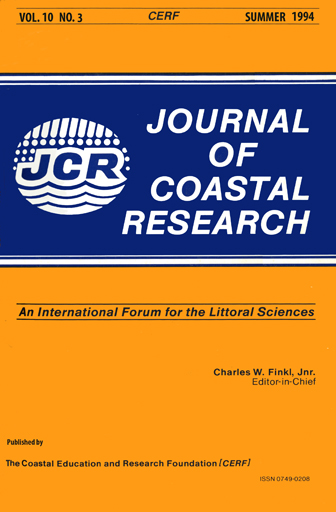Velocity Structure and Sea Bed Roughness Associated with Intertidal (Sand and Mud) Flats and Saltmarshes of the Wash, U.K.
Keywords:
Intertidal flat, saltmarsh, velocity gradient rig, logarithmic profile, roughness length, shear velocity, drag coefficient, bedform detectorAbstract
Velocity gradient rigs used to examine flow profiles across an intertidal zone within an essentially accretional embayment. Of the profiles measured, around 90% can be represented logarithmically. For comparison, associated bedforms were measured in situ using a bedform detector. Equivalent mean roughness lengths of 0.32 - 0.49 cm and 1.65 cm were established for the rippled Arenicola sandflat/lower sandflat, and lower mudflat of the intertidal zone, respectively.
On the saltmarsh of the supratidal zone, however, the flow structure disappears: most of the observed profiles (75 %) are structureless.
Roughness lengths derived on the basis of the LETTAU (1969) and WOODING et al. (1973) equations and compared with the field observations demonstrate that empirical constants calculated for the sandflats must be multiplied by 5.4 and 3.1, respectively. In contrast, they represent adequately the flow resistance over the large-scale erosional features of the mudflats.
Roughness lengths relate closely to the scale of the bedforms present with elements consisting of: particle grain size, ripples on the intertidal sandflats, and large-scale scour features associated with the mudflats.


